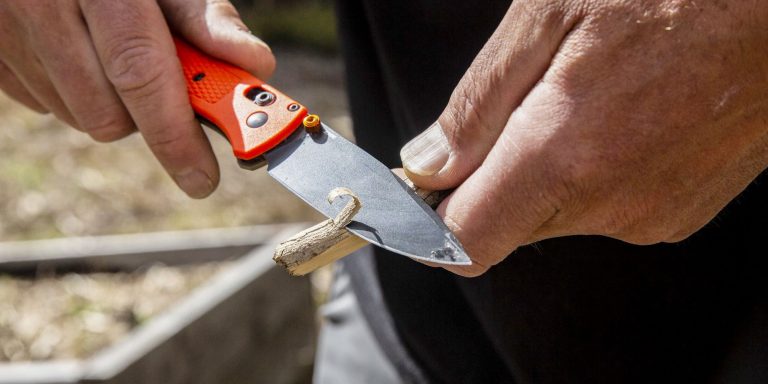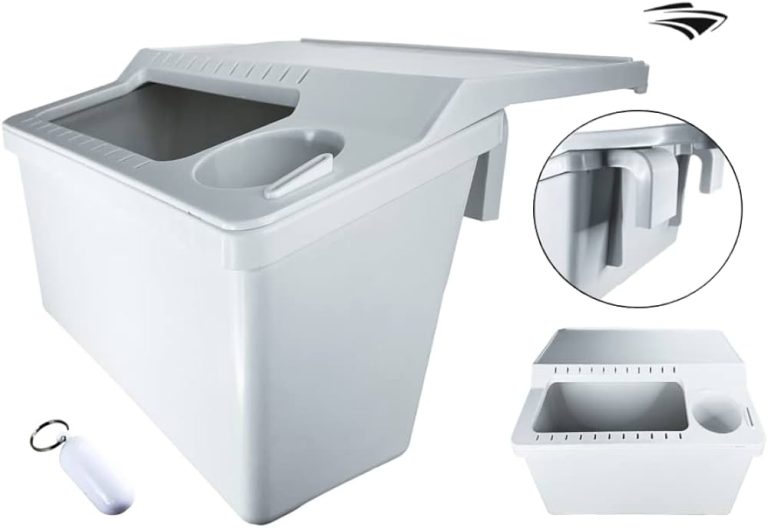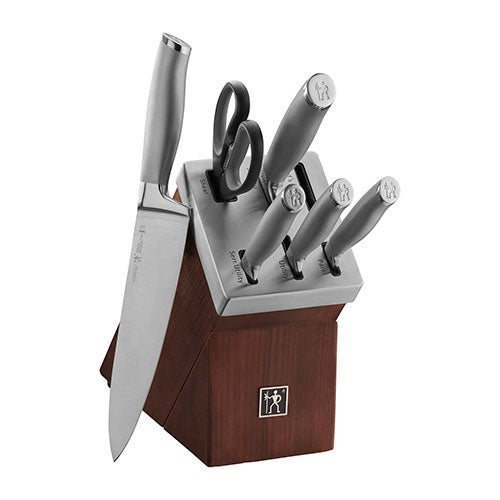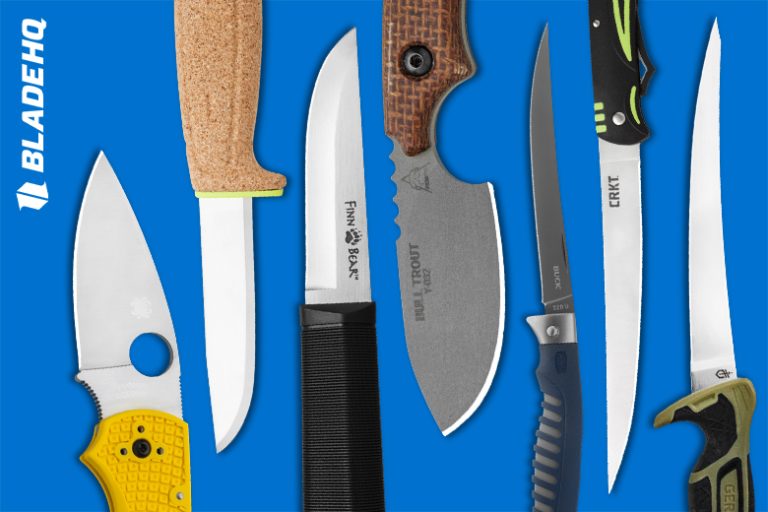Surviving in the Wild: You Need More Than Just a Knife
Surviving in the wild goes beyond relying on a knife. It requires a comprehensive set of skills.
When venturing into the wilderness, having the right tools is essential, but knowing how to use them effectively is equally important. While a knife can be useful for certain tasks, such as cutting branches or preparing food, it alone cannot guarantee survival.
We will explore the various skills and knowledge necessary for thriving in the wild, emphasizing the significance of understanding shelter building, water sourcing, fire making, and foraging for food. By understanding these essential skills, you can enhance your chances of survival in challenging outdoor environments.
The Importance Of Proper Survival Skills
Understanding the basics of wilderness survival is essential for anyone venturing into the great outdoors. Whether you’re an experienced hiker or a novice camper, knowing how to survive in the wild goes beyond just carrying a knife.
There are key elements that can make a difference between life and death in such situations. First and foremost, knowledge of your environment is crucial. Familiarize yourself with the terrain, climate, and local wildlife. Mastering essential survival techniques such as building a shelter, finding and purifying water, and starting a fire is paramount. Equally important is **having a well-stocked survival kit** that includes tools, first aid supplies, and navigation equipment.
In addition to these practical skills, maintaining a calm and positive mindset is essential. Staying alert and keeping a positive mental attitude can help you make better decisions and adapt to challenging situations. Finally, knowing when to seek help and having a communication plan is crucial for increasing your chances of survival.
Surviving in the wild requires a combination of knowledge, skills, and preparedness. By understanding these key elements, you can navigate the wilderness with confidence and ensure your safety even in the most challenging situations.
Essential Tools For Wilderness Survival
Surviving in the wild requires more than just a knife. While a dependable blade is crucial, there are other essential tools that you should have in your wilderness survival kit. These tools go beyond the knife, offering versatility and increased survival chances.
| Tool | Description |
|---|---|
| Firestarter | A fire can provide warmth, cooking, and signal for help. A reliable firestarter like a Ferro rod or waterproof matches is indispensable. |
| First Aid Kit | Injuries are common in the wilderness. A well-stocked first aid kit is vital to address wounds, cuts, sprains, or even more serious medical emergencies. |
| Compass and Map | Navigation tools such as a compass and a detailed map enable you to orient yourself, find your way, and avoid getting lost. |
| Water Purification | Safe drinking water is essential for survival. Equip yourself with a water purification filter or tablets to prevent waterborne illnesses. |
| Emergency Shelter | When unexpected weather strikes, having a lightweight and sturdy emergency shelter, such as a tent or tarp, can protect you from the elements. |
These tools, in addition to a reliable knife, form the foundation of a well-prepared wilderness survival kit. Remember, being prepared increases your chances of survival in any outdoor adventure.
Building Your Survival Kit
Selecting the right equipment for your needs:
When it comes to building a survival kit, it’s important to prioritize the essential items. The wilderness can be an unpredictable and challenging environment, so you need to ensure you have the right tools to stay safe and survive. Start by considering your needs and the specific challenges you may face. For example, if you’re planning a camping trip in a remote area, you’ll want to focus on items like a durable tent, a warm sleeping bag, and cooking utensils. Additionally, a navigation device, like a compass or GPS, is crucial for finding your way. Remember to pack enough food, water, and clothing to last you throughout your journey. It’s also important to include a first aid kit, signaling devices, and a multi-tool. By prioritizing important items, you can build a survival kit that will help you navigate the wild with confidence.
Finding And Purifying Water
Locating sources of clean water is crucial when surviving in the wild. Without access to safe drinking water, your chances of survival diminish significantly. You need to be resourceful and observant to find potential water sources. Look out for signs of vegetation, animal tracks, or high ground that may indicate the presence of water nearby. Streams, rivers, and lakes are good candidates for water sources, but always take caution and ensure the water is not contaminated.
Once you’ve found water, effectively filtering and purifying it is essential to make it safe for consumption. There are various methods you can employ for filtration and purification. Boiling water is a reliable and straightforward method that kills most microorganisms. Alternatively, using water filters and purifiers can remove particles, bacteria, and parasites. Chemical disinfection, such as using iodine tablets or chlorine drops, is also an option. Remember to carefully follow the instructions provided with these methods to ensure proper purification.
| Effective Filtration Methods | Purification Methods |
|---|---|
| Water filters | Boiling |
| Activated charcoal filters | Chemical disinfection |
| Reverse osmosis filters | UV sterilization |
Navigating The Wilderness
Surviving in the wild requires more than just a knife. When it comes to navigating the wilderness, you need to rely on more natural methods of orientation. Using natural landmarks can be a lifesaver in unfamiliar terrain. By carefully observing your surroundings, you can identify mountains, rivers, and other distinctive features that can help you find your way. Additionally, learning techniques for map reading and compass navigation can further enhance your survival skills. By studying topographic maps and understanding how to use a compass, you can determine your exact location and plan the most efficient route. Remember, survival in the wilderness is all about being resourceful and adaptable. By equipping yourself with the knowledge and skills needed to navigate nature’s obstacles, you can increase your chances of making it out safely.
Building A Shelter
When it comes to surviving in the wild, building a sturdy shelter is crucial. In this blog post, we will discuss the essential steps for constructing a shelter and explore different options for various environments.
Shelter options for different environments
1. Forest: In a forest setting, taking advantage of natural resources such as trees and branches can be effective. Build a leafy debris shelter by creating a framework from sturdy branches and covering it with a thick layer of leaves.
2. Desert: In hotter climates, a shelter that provides shade and insulation is essential. Opt for a low profile shelter using rocks or sandbags to create walls, and cover it with a shade cloth or fabric to keep cool.
3. Mountains: In higher altitudes, protect yourself from harsh winds. Construct a lean-to shelter against a solid rock or use boulders to create a windbreak, ensuring stability by anchoring with additional rocks.
Remember to prioritize finding a suitable location, assessing nearby resources, and utilizing your surroundings to maximize safety and comfort. Building a shelter provides protection from the elements and increases your chances of survival in the wilderness.
Fire Starting Techniques
Fire Starting Techniques
When it comes to surviving in the wild, fire is an essential element. But choosing the right fire-starting materials and mastering different fire-making methods are crucial for success.
Choosing the right fire-starting materials
| Materials | Advantages | Disadvantages |
|---|---|---|
| Dry leaves and twigs | Readily available, easy to ignite | Burns quickly, may not sustain the fire |
| Cotton balls soaked in petroleum jelly | Burns long and hot, water-resistant | Requires preparation, need to carry |
| Tinder fungus | Slow-burning, natural material | Not always easy to find |
In addition to choosing the right materials, mastering different fire-making methods increases your chances of success. These methods include the hand drill technique, bow drill technique, and the magnifying glass method. Each method requires practice and patience, but they offer alternative ways to start a fire without relying solely on matches or lighters.
Remember, in the wild, fire is your lifeline. By understanding fire starting techniques, choosing the right materials, and mastering various methods, you increase your chances of survival.

Credit: freerangeamerican.us
Searching For Food
Surviving in the wild requires more than just a knife. When it comes to searching for food, it’s crucial to have knowledge of identifying edible plants and insects. This is an essential skill that can help sustain you in the absence of other food sources. Look for plants that are easily recognizable and safe to consume. Some common edible plants include dandelions, wild strawberries, and cattails. However, it’s important to avoid eating anything that you’re unsure of, as certain plants can be poisonous.
In addition to plants, insects can be a valuable source of sustenance. Some insects like crickets, grasshoppers, and ants are edible and packed with protein. However, it’s essential to learn how to properly identify and prepare them to ensure safety. Hunting and fishing are also crucial for survival. Develop strategies for successful hunting by learning about animal behavior and tracking techniques. Fishing requires patience and knowledge of different baits and fishing methods for different species of fish.
Remember, the ability to find and gather food is essential for surviving in the wild. Don’t solely rely on a knife, but rather equip yourself with the knowledge and skills to identify edible plants and insects, as well as successfully hunt and fish. These skills will greatly increase your chances of surviving in the wild.
First Aid Skills For Wilderness Emergencies
When exploring the wild, it’s crucial to equip yourself with more than just a knife. Basic first aid skills are essential for handling wilderness emergencies effectively.
Basic first aid techniques for common injuries
In the wilderness, injuries are bound to occur. Here are some essential first aid techniques you should know:
- Treating bites and stings: If you encounter insect or animal bites, clean the affected area with soap and water. Apply a cold compress to reduce swelling and seek medical attention if necessary.
- Dealing with cuts and wounds: Clean the wound with antiseptic wipes apply an adhesive bandage or dressing, and elevate the injured area if possible to minimize bleeding.
- Managing burns: For minor burns, flush the area with cool water and cover it with a sterile dressing. Seek medical help for severe burns.
Treating bites, stings, and other wilderness ailments
Aside from bites and stings, certain wilderness ailments require specific treatment:
| Condition | Treatment |
|---|---|
| Heat exhaustion | Move to a cooler place, drink fluids, and apply cold compresses. |
| Dehydration | Drink plenty of fluids or utilize oral rehydration solutions if available. |
| Fractures | Immobilize the affected limb with a splint and seek immediate medical assistance. |
Mental And Emotional Preparedness
In survival situations, mental and emotional preparedness is just as important as having the right tools. Maintaining a positive mindset can make all the difference in overcoming the challenges you may encounter. Coping with fear, stress, and loneliness is crucial to ensuring your survival.
Fear can immobilize and cloud your judgment, so it’s vital to acknowledge your fears and find ways to manage them. Practicing mindfulness and focusing on the present moment can help you stay grounded in challenging situations.
Stress is a natural response, but it can impede your ability to think clearly and make rational decisions. Engaging in stress-reducing activities such as deep breathing exercises or finding moments of calm amidst the chaos can help you stay focused.
Loneliness can be another obstacle to overcome. Building a support system and staying connected with loved ones can provide emotional comfort and motivation during the toughest times.
Remember, surviving in the wild requires more than just physical tools. Developing mental and emotional resilience will greatly enhance your chances of not just surviving but thriving in any wild situation.
Conclusion
When venturing into the wild, it is crucial to remember that survival extends beyond the grasp of a knife. While a knife may be a valuable tool, relying on it alone is not sufficient. The wilderness demands a versatile and well-prepared adventurer.
From securing shelter to finding sustenance, the ability to adapt and think critically is paramount. Knowledge of the environment, basic first aid, and fire-making skills are indispensable for surviving in the wild. Additionally, learning to navigate using the stars or a map and compass is crucial for avoiding getting lost.
Remember to pack appropriate clothing for the weather conditions and bring basic survival equipment such as a fire starter, water purification tablets, and a signaling device. No matter how well-equipped you may be, survival ultimately depends on your mental strength and determination.
So, embrace the adventure, prepare yourself holistically, and unlock the untamed wonders of the wild.






